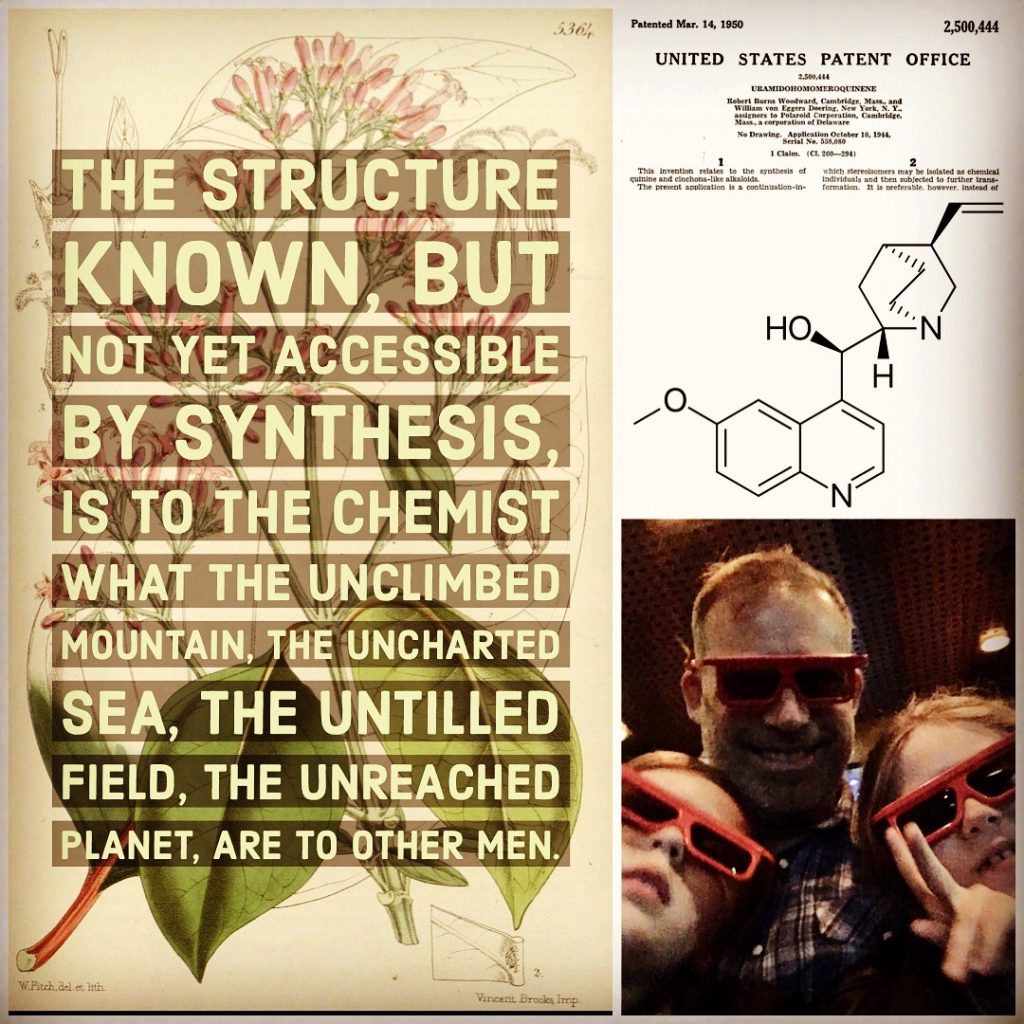Robert Burns Woodward invented the first ever process for synthesis of the medicinal compound quinine, used to treat malaria. He obtained several patents to methods and intermediate compounds used in the synthesis, including U.S. Pats. 2, 395, 526; 2,500,444; and 2,475,932. During WWII, Germany cut off quinine supplies after conquering the Netherlands, who controlled the Indonesian plantations that had monopolized production of cinchona bark—the natural source for quinine. Besides being used to treat malaria, quinine was also an essential component for light polarizers used extensively by the Allies in during the war, and in 3D glasses.

Quinine forms light polarizing crystals of herapathite when reacted with iodine. Just before famously inventing the instant camera, Polaroid’s Edwin Land hired Woodward to invent a synthetic substitute for quinine. Although the process Woodward invented was too tedious to be used commercially, it represented a major breakthrough in synthetic organic chemistry.
“The structure known, but not yet accessible by synthesis, is to the chemist what the unclimbed mountain, the uncharted sea, the untilled field, the unreached planet, are to other men.”
Robert Burns Woodward
Woodward went on to synthesize many naturally occurring compounds including cholesterol, cortisone, and chlorophyll. His work opened a new “Woodwardian era” in organic chemistry. He won the Nobel prize in 1965 for his work in organic chemistry, after being nominated 111 times.
